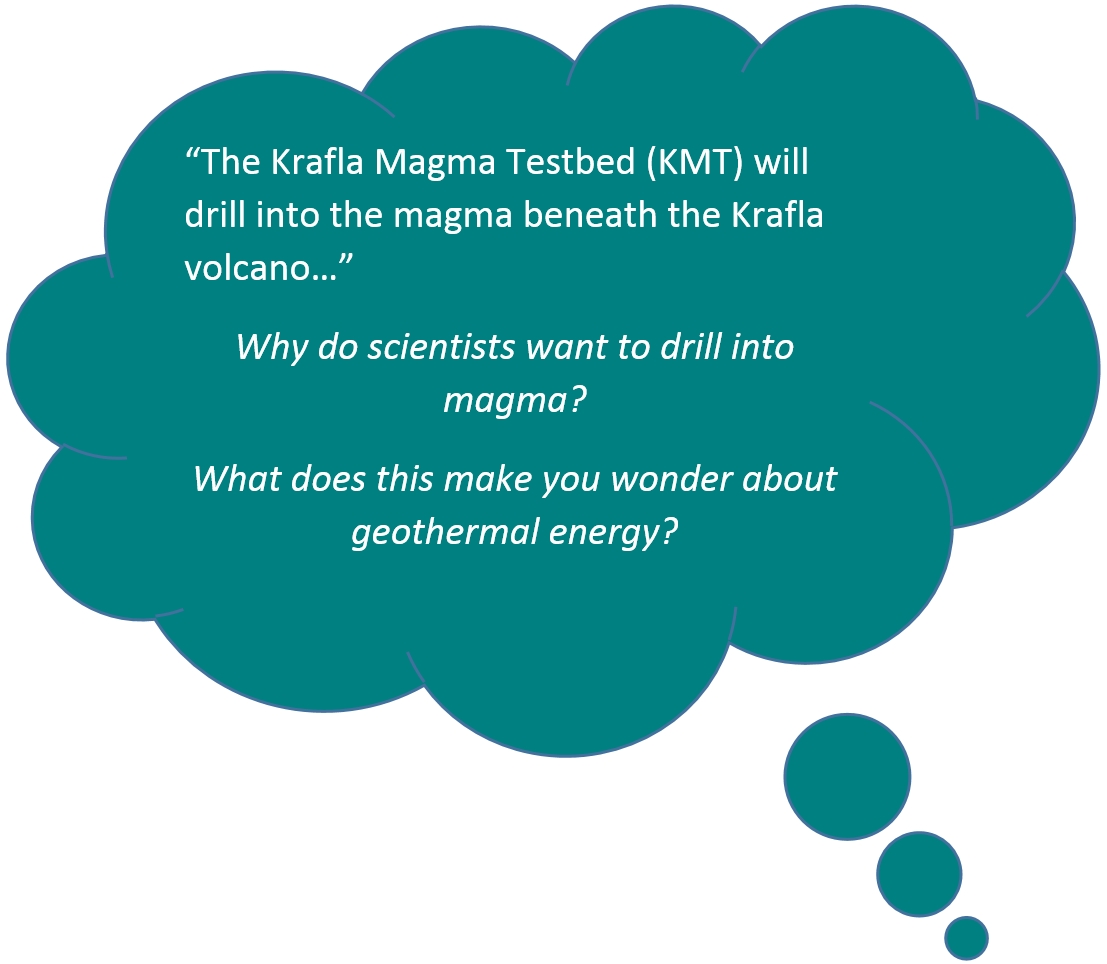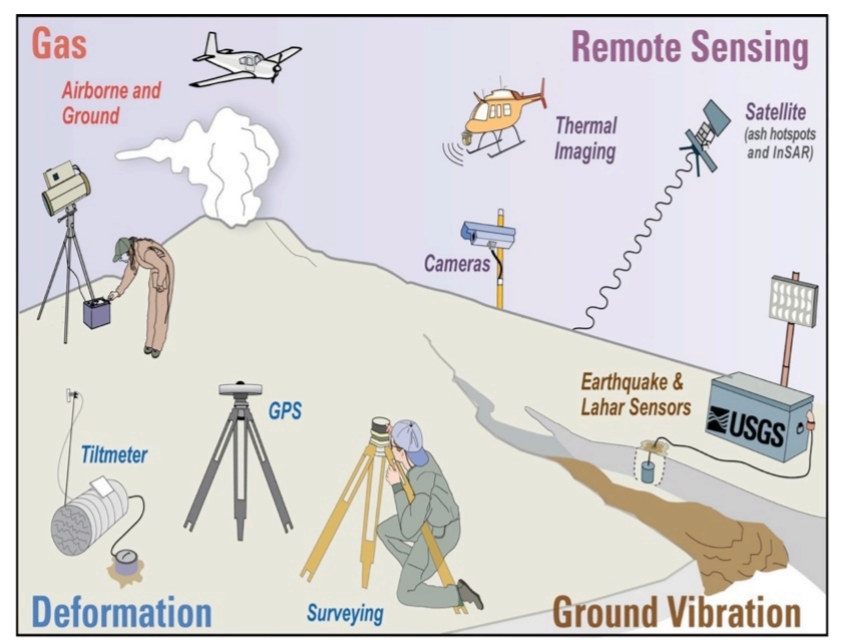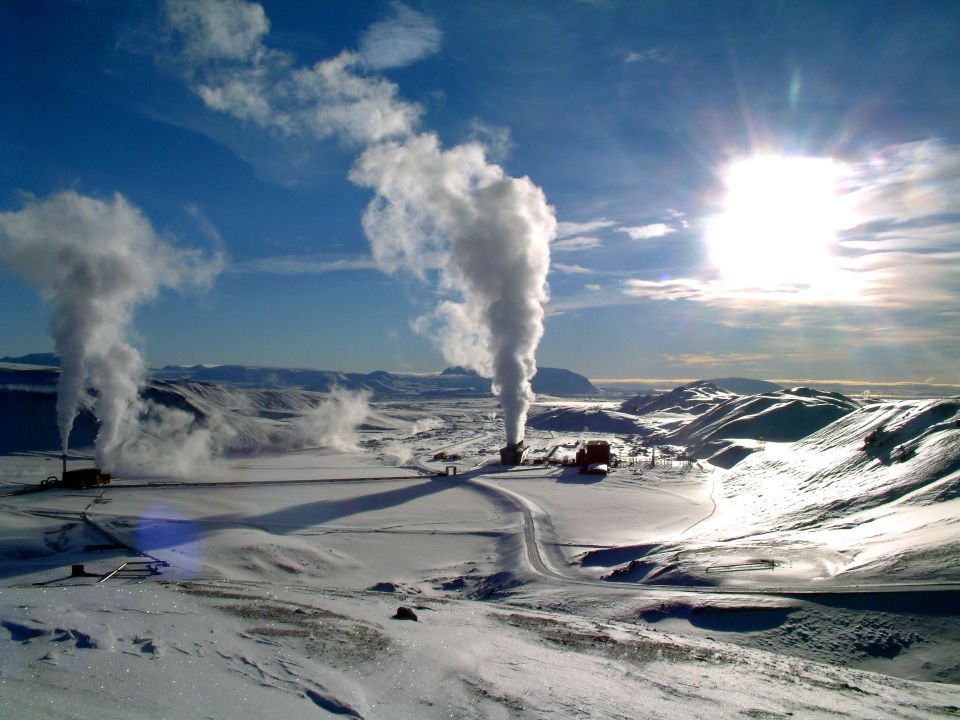The Krafla Magma Testbed (KMT) will drill into the magma under the Krafla volcano. KMT aims to set up a place for experts from around the world to study magma.
To drill into the magma chamber of a volcano you need to know exactly where the magma is, so controlled drilling can be done without causing more volcanic activity or an eruption.
This project was made possible when geothermal drilling in the area accidentally entered the magma chamber and the well was able to be lined, the magma controlled, and geothermal energy was produced. Before this people did not know that it was possible to drill safely into magma and keep the well stable.
The KMT includes experts from 15 countries. The KMT will be a 25-year project with experts in:
- science
- engineering
- technology
- education
Why Krafla?
The Krafla volcano is a great place to do this study because it has a long history of geological study, volcano monitoring, and drilling as well as base facilities. These factors will allow the safest base to explore beneath the Earth’s surface. This project will:
 develop understanding of magma systems and where magma meets solid crust
develop understanding of magma systems and where magma meets solid crust- improve understanding of volcanoes and how they can be monitored
- allow the capture of high temperature geothermal energy
- develop new technology and materials that work in extreme conditions.
This project will give access to areas that have not been studied before. Volcanic processes are usually studied from above and on the Earth’s surface. By drilling into magma, samples can be collected and analysed over a long period of time improving knowledge of volcanoes.
Predicting volcanic eruptions
Drilling into magma has already been done safely. The next step is to drill into magma in a planned, scientific way. The findings from this drilling project could help better forecast volcanic eruptions in the future. For people living close to active volcanoes this could allow daily and weekly magma forecasts.
Electricity
Magma is a lot hotter than rock, so can generate a lot more energy. The challenge is to be able to drill deep enough to get to the magma and to be able to keep the well stable. It is hoped that this long-term project will lead to a number of geothermal wells and a reliable source of heat to make electricity.
The challenges of drilling into magma
The high temperatures of magma are not something drilling technology has been designed for before. In the past drilling projects have accidentally found magma. The change in heat and pressure caused equipment to fail but with new technology safe drilling should be possible.
Drilling into magma is not without risk. Puna Geothermal Power Station in Hawaii was one of the last places to find magma but this has now been overtaken with lava eruptions.
Ready for a quiz? Try the 'Drilling into a Volcano' interactive activity.







